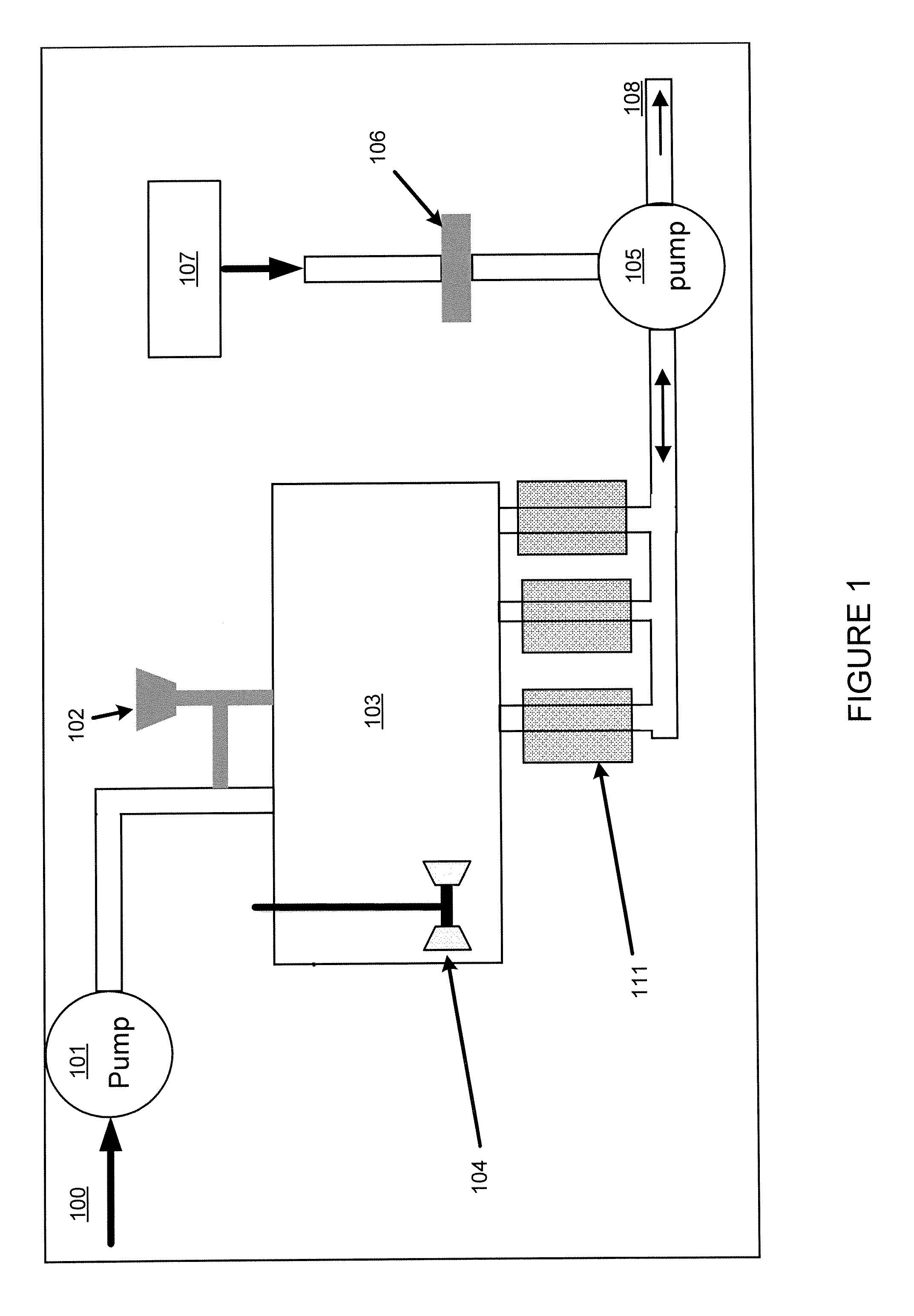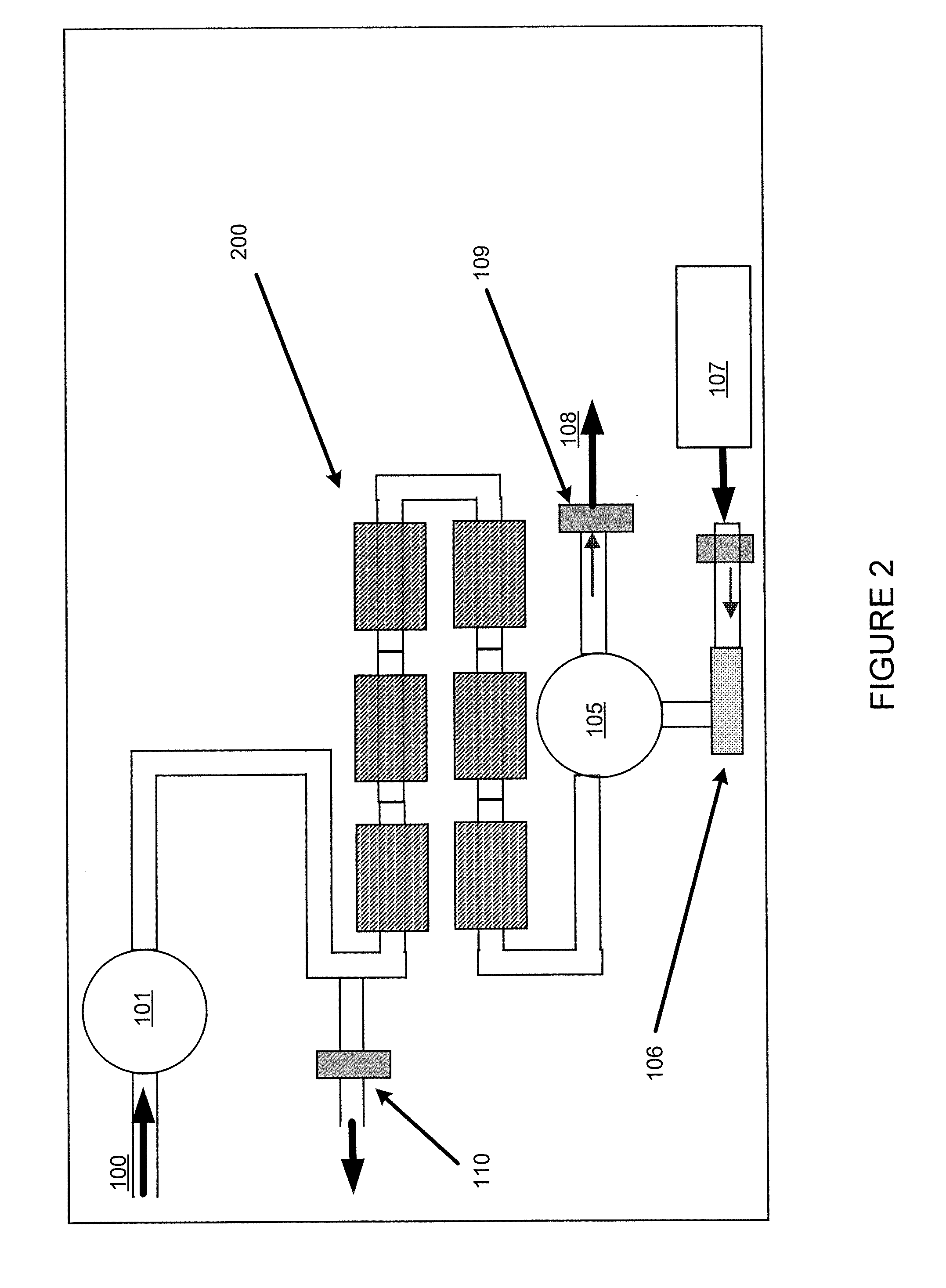Method and system to remove agent from liquid phase
a liquid phase and agent technology, applied in the field of removal of agents, can solve the problems of destroying the use of these components in applications, contaminating effluent water with the mercury removed from the gaseous state, and affecting the life of filters, so as to improve the life of filters and the effect of total capture capability
- Summary
- Abstract
- Description
- Claims
- Application Information
AI Technical Summary
Benefits of technology
Problems solved by technology
Method used
Image
Examples
example 1
[0087]This example describes the production of a dissolvable and magnetically recoverable adsorbent for mercury. A small quantity of cellulose acetate fiber, 0.5 gram, was dissolved in approximately 20-30 ml of reagent acetone to create the cellulose acetate (CA) dope. Approximately 1 liter of deionized water was placed in a large beaker. A hand-held battery powered laboratory agitator was used to stir the solution. The dope was added to the vortex of the vigorously stirred water drop-wise using a small pipette while continuously stirring the water. When all the dope had been added, stirring was stopped and the water allowed to go to a quiescent state.
[0088]A layer of CA fiberettes formed in the water and floated as a surface layer on the water. These fiberettes were skimmed off with a laboratory spoon and placed in a 250 mm evaporating dish and as much water-acetone solution as possible was decanted. An additional aliquot of water was added to assist mixing adsorbent in the next st...
example 2
[0096]This example addresses how the magnetic recovery process can be combined with a “batch” adsorption process, as shown in FIG. 10. In Step 1, the same magnetic support with adsorbent as used in Example 1 above is added to a reservoir 600 containing approximately 1 liter of liquid holding 30 ppb mercury. The ratio of mass of adsorbent to volume of fluid was 1 gram per 500 ml of liquid.
[0097]In Step 2, the stirring assembly 610 with collection arms 612 is inserted into the reservoir 600 holding the adsorbent and liquid. In this case, as shown, the stirring assembly is a rotating turbine stirrer. The magnets or electromagnets used for collection are not inserted or energized.
[0098]In Step 3, the reservoir is stirred for a determined period suitable to obtain a desired reduction in mercury concentration.
[0099]In Step 4, the magnets 620 are inserted into the collection arms, or the electromagnets are activated, while the solution is stirred. The magnetic force collects the magnetic a...
PUM
| Property | Measurement | Unit |
|---|---|---|
| Solubility (mass) | aaaaa | aaaaa |
| Magnetism | aaaaa | aaaaa |
| Bond | aaaaa | aaaaa |
Abstract
Description
Claims
Application Information
 Login to View More
Login to View More - R&D
- Intellectual Property
- Life Sciences
- Materials
- Tech Scout
- Unparalleled Data Quality
- Higher Quality Content
- 60% Fewer Hallucinations
Browse by: Latest US Patents, China's latest patents, Technical Efficacy Thesaurus, Application Domain, Technology Topic, Popular Technical Reports.
© 2025 PatSnap. All rights reserved.Legal|Privacy policy|Modern Slavery Act Transparency Statement|Sitemap|About US| Contact US: help@patsnap.com



